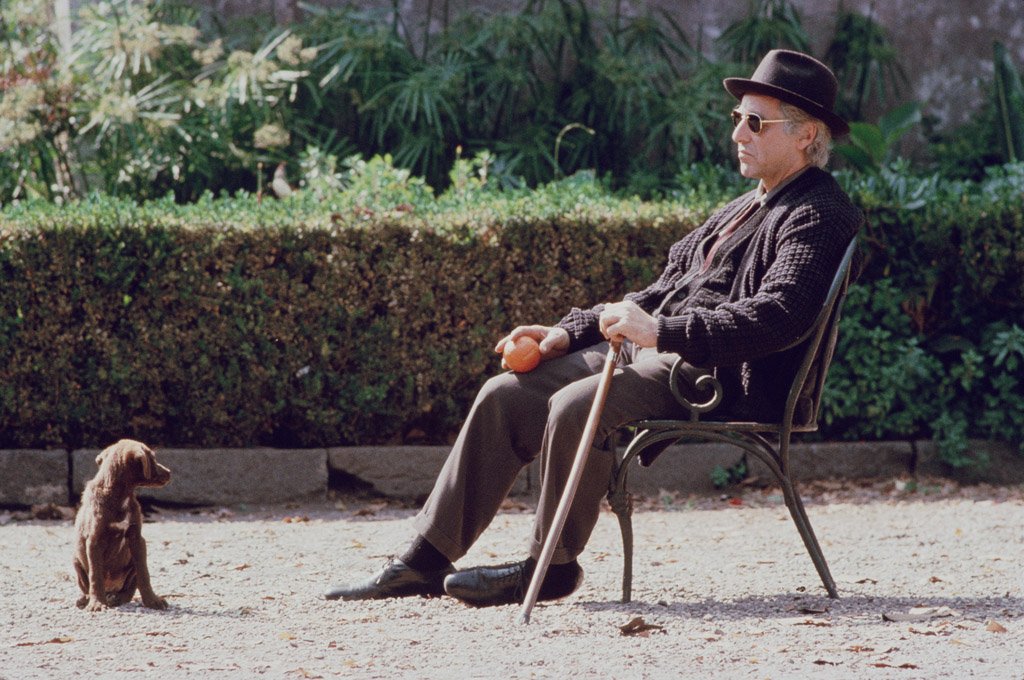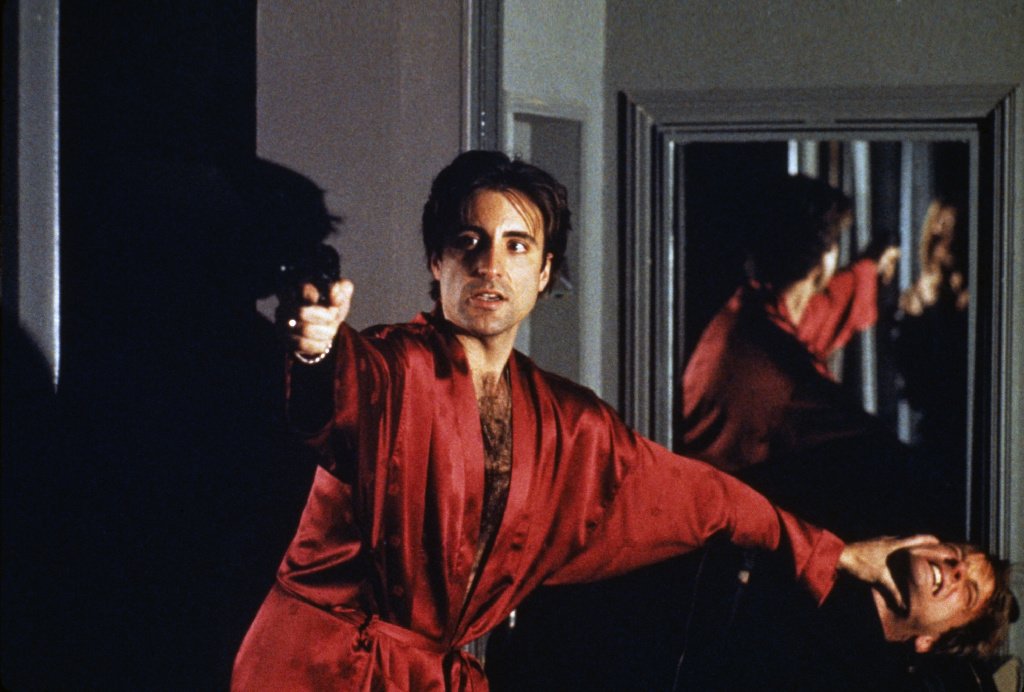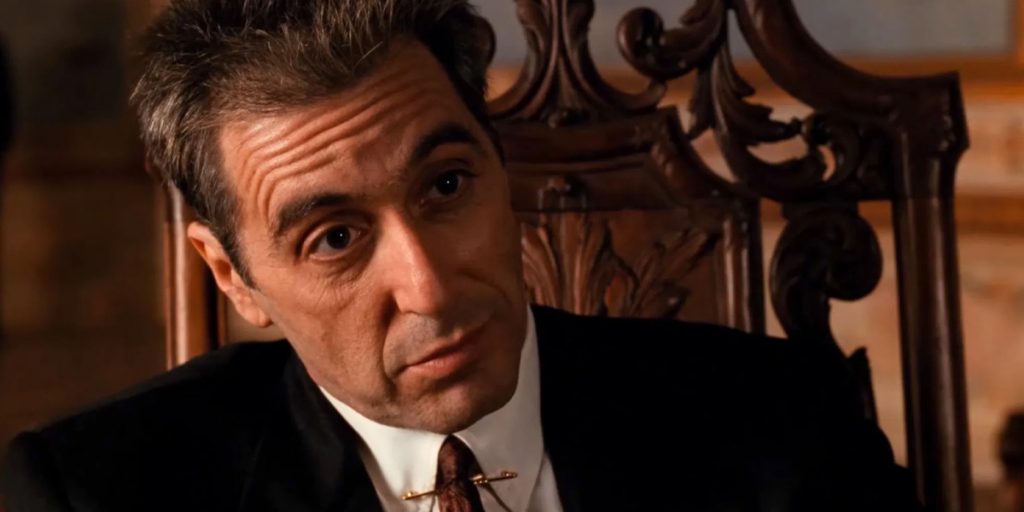The Godfather, Coda: The Death of Michael Corleone manages to significantly improve the oft-maligned third film in Coppola’s classic series.
As I rewatched The Godfather: Part III for the first time in a great many years, I was, for the first time, struck by a more succinct crystallization of my real objection to the film. Many obvious problems remained: Sofia Coppola is distractingly amateurish, the plot is convoluted and predicated on characters barely introduced, the film feels only lightly tied to its predecessors as characters like Robert Duvall’s Tom Hagan were unceremoniously replaced, and the opulent production values of the first two films seem to be muted. The real problem that finally dawned on me is Al Pacino.
In The Godfather and The Godfather: Part II, Pacino gives as good a performance as any actor ever has. He is a live wire of restrained energy – a human casing for decades of pent up frustration walled in by a calm, cold, account-like assessment of the world he inhabits. When he finally snaps at the end of The Godfather: Part II over the revelation of his wife’s abortion, rage seems to slowly leak out of his entire body before gushing out of his eyes. The look he gives Diane Keaton is one of the most chilling in cinema history. But what is the most important takeaway of the character, his greatest strength, is that he quickly manages to regain control. When he orders his treacherous brother Fredo executed, it is with calm, brutal, and measured efficiency. He has ice water in his veins and he has retained control.
By the time we get to the 1990s and the release of The Godfather: Part III, Pacino has leaned into his whole “hoo-ah!” persona. You know what I mean – he’s an overwhelming presence on the screen, gnawing at scenery left & right, and forever the loudest actor in each scene… and sometimes it works splendidly. I wouldn’t have Heat any other way – a big, burly testosterone fueled “guy cinema” classic needs someone to go BIG in that part, and Pacino delivers. Dick Tracy, Any Given Sunday, and, hell, even The Devil’s Advocate have the right sort of cheese to benefit from “Big Pacino.” But unfortunately for The Godfather: Part III, Michael Corleone is not Tony Montana after a small mountain range of blow. What makes the character so effective, what made him Vito Corleone’s choice to take over the family, was that he would not allow his emotions get the better of him. The brilliance of The Godfather Duology’s conclusion rests in his ability to control the darkness, and act rationally.

The character we meet in The Godfather: Part III seems the furthest thing from the Michael we knew before. It is not as though tribulation has driven him into a darker place, or even that his demons have gotten the better of him, the Michael we see picking up nearly two decades after the prior film has reasonably healthy relationships with his children, he has a cordial relationship with the ex-wife we had last seen him battering on a couch, and his business empire has moved into full legitimacy. His new caporegimes are accountants and lawyers.
Leaving aside the cynical genesis of Part III (Coppola needed a hit after a long run of box office bombs), there’s potential for a story about this mellowed character. The notion that his tough guy background remains an omnipresent thorn or the weight of his guilt over the murder of his own brother slowly drives him to a breaking point. The problem is that Pacino, at least as presented in the theatrical cut, spends most of the film at a huge register. A man who walks around muttering like a street gangster is not cutting $600 million dollar bank deals. A man who explodes with emotion over modest slights is not going to guide a mob family into billionaire legitimacy. A man who openly disrespects his rivals for no good reason would never has consolidated power so effectively. In short, Al Pacino is no longer playing Michael Corleone. It is as though he’s playing Sonny Corleone – James Caan’s flawed hothead gangster in the first film. It is the film’s true fatal flaw.
And so I entered The Godfather, Coda: The Death of Michael Corleone with a real sense of disquiet that nothing Coppola could muster from old footage and a re-edit would address my primary concern. When I finished the film, I was blown away by how effectively some relatively minor edits could shift the entire feel of the project.
To be clear, Pacino is still too big for the Michael Corleone of the first two films here. Yet, by removing much of the original slog of an opening, Coppola has significantly reoriented the stakes of the story. In Part III, Coppola opens with an extended flashback to Fredo’s death cross-cut with Michael receiving an award from the pope in St. Michael’s Cathedral. Simultaneously, it tethers us to the icy efficiency of that character and introduces us to the present Corleone’s success at his longstanding goal of bringing legitimacy to the family. Coppola bathes us in all the things the important thematic notes that Pacino’s performance will serve to undercut. Here, the film opens with a scene that initially appeared about 45 minutes into the original film of Michael negotiating an “investment” in the papal bank in order to buy a controlling corporate share. It’s presented as the last step in his family’s move from legitimate businessmen to genuine titans of industry. It is immediately clearer how the pressure of that transaction could weigh on Michael as his plan for “final” legitimacy slowly crumbles. It’s a marked tonal shift achieved by simply removing the celebratory praise of the original cut and replacing it with the tension of the Coda cut.

When Michael chastises his son for pursuing an opera career instead of finishing law school, in Part III it feels like a man of great means bullying his son, and in Coda it feels like a man who wants his son to have the option of a legitimate career if his own empire should crumble. In a small way, it makes the film’s inevitable tragedy grander when we better understand Michael’s love for his children. The tonal shift permeates the entire film and does, in large part, address some of my concerns. Frankly, it often feels like Coppola literally turned down the volume on Pacino’s performance. Perhaps it is a result of the film’s sumptuous new color treatment, which removes the “old Hollywood” golden hue of Part III and replaces it with an aesthetic that is simultaneously grittier and brighter, which falls more in line with the film’s late 70s setting. Maybe “Big Pacino” just feels more right removed from the classic movie look, but I suspect it’s the more careful cuts and studious audio mix that regulate his performance a bit.
It is not usually the case that a “director’s cut” sees about 12 minutes excised from the runtime of a film. While Part III ran 170 minutes, Coda runs 160 including a short introduction from Mr. Coppola himself. It is surprising that so few minutes could so comprehensively improve a film’s pacing, but here we are. Even small beats from performances are trimmed to make them a bit more efficient or, in Sofia Coppola’s case, a bit less awkward. Two of her scenes are trimmed to remove moments of awkward delivery and to hone in on the focal purpose of the character. The ending, too, is slightly tweaked in a way that serves as a better, more fitting, denouement for one of cinema’s great flawed characters. As someone who watches film compulsively, I found the exercise of watching both cuts of a flawed movie back-to-back extraordinarily illuminating. It is one of the simplest exercises I might recommend to someone to get a better understanding of how massively editing impacts the overall feel of a film.
So the big question remains: has this new edit elevated The Godfather, Coda to the level of the first two films? No, and it is not particularly close. But the good here simply feels a bit better. Andy Garcia’s (The Untouchables) magnificently charismatic performance as Sonny Corleone’s bastard Vincent remains a masterclass of Big acting. He is immensely charming and gleefully violent in a way that just barely stays on the right side of overacting. The scene where he confronts two home invaders remains a miniature masterclass in tough guy action filmmaking. Michael’s sister Connie’s (Talia Shire, Rocky) shift into a sort of Lady Macbeth figure in Michael’s life remains a joy. The film’s cross-cut opera assassination finale remains a showstopper, and a splendid echo of the Christening scene in the first film. Perhaps the highest praise I can offer the film is that the next time I decide to watch The Godfather movies, I probably won’t stop after Part II.

